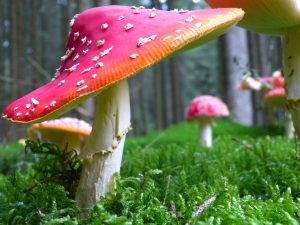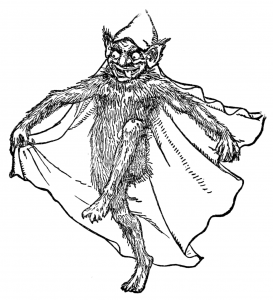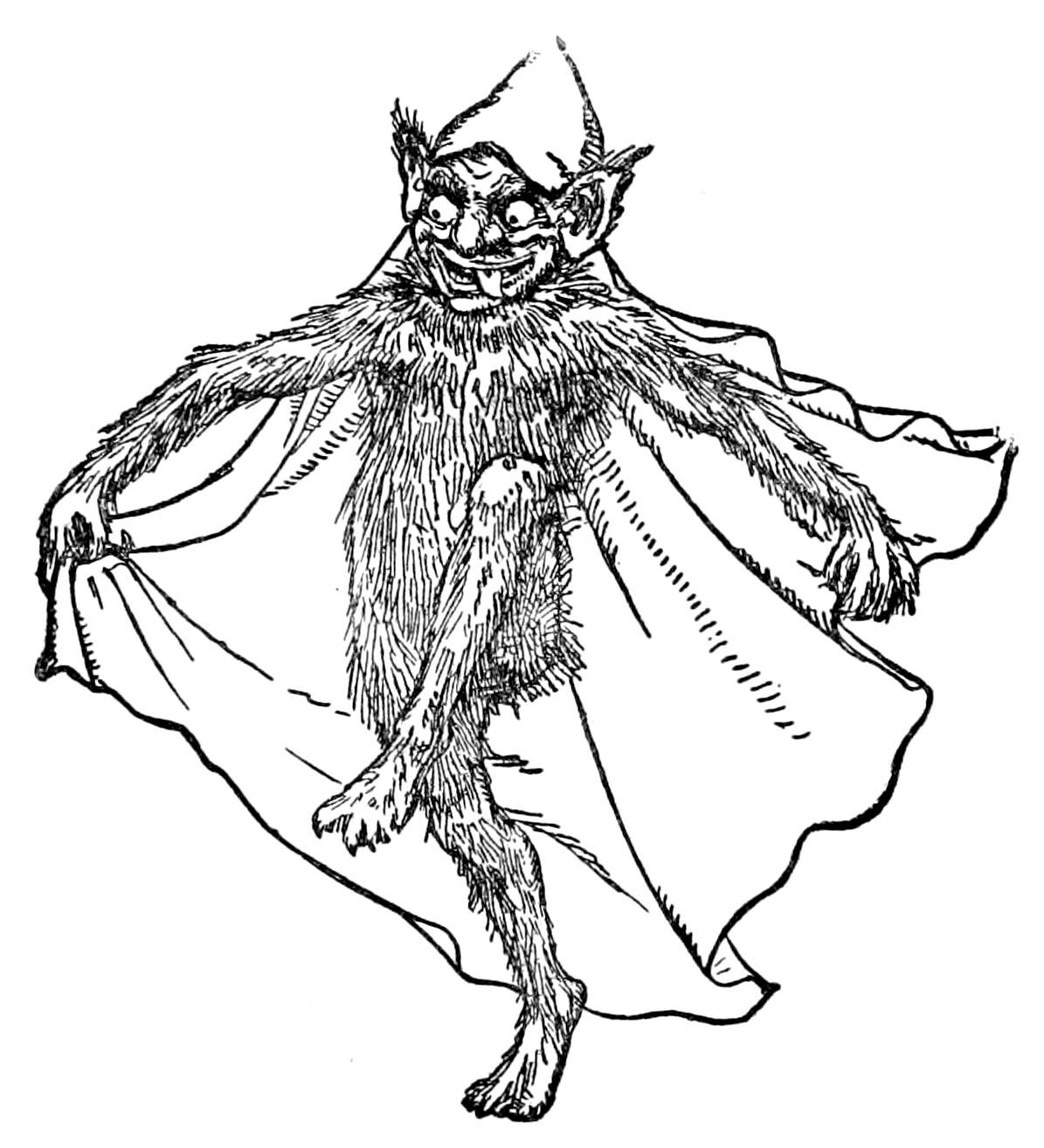While collecting mushrooms Malial encounters an urisk. What is an urisk and where are they found?
The urisk is a mythical household spirit from English and Scottish folklore. You may be more familiar with another name that urisks are known by – the brownie. However, to the Lowland Scots, they were known as urisks so that is what we shall continue to call them.
Urisks and brownies in folklore
An urisk is the Scottish and Northern English counterpart of the Scandinavian tomte, the Slavic domovoi and the German Heinzelmännchen. On the whole, urisks are seen as friendly and helpful and were widely believed to live in people’s houses (in the unseen parts) and worked to be helpful at night when they would not be seen.
Folklorist John Gregorson Campbell distinguishes between the English brownie, which lived in houses, and the Scottish ùruisg or urisk, which lived outside in streams and waterfalls and was less likely to offer domestic help. Certainly, the urisk that Malial encountered was not the domestic helper kind.
In Legend, the urisk displays a number of magical abilities including the ability to vanish in a tiny puff of angry smoke. The urisk says some things about Malial’s fate which is discussed in the Legend: Prophecy Index (contains spoilers).
Urisk homes (mushrooms)
 In Legend, the urisk was living in a red capped mushroom (chapter 2). This is a common image of folk stories and fairytales. The mushroom in question being the Fly Agaric which has psychoactive and hallucinogenic properties. As such it is hardly surprising that they are so closely connected to magic and myth.
In Legend, the urisk was living in a red capped mushroom (chapter 2). This is a common image of folk stories and fairytales. The mushroom in question being the Fly Agaric which has psychoactive and hallucinogenic properties. As such it is hardly surprising that they are so closely connected to magic and myth.
In the story, the urisk attempts to defend his home and gets very cross when he cannot get it back. The urisk home becomes a prize for the four hags (more on them in another post). At this stage, it may be too much of a spoiler to say what they want them for but you can be sure this is not the last time we will encounter the urisk.
What do urisks look like?
 Many legends and myths are what we might call “light on details”. This is often a feature of folk stories – the details of what things look like are often left out as if the listener should already know such things.
Many legends and myths are what we might call “light on details”. This is often a feature of folk stories – the details of what things look like are often left out as if the listener should already know such things.
The illustration for this post comes (via the public domain) from a book called “English Fairy Tales” published in 1895. The caption reads:
“What’s a Brownie?” you say. Oh, it’s a kind of a sort of a Bogle, but it isn’t so cruel as a Redcap! What! you don’t know what’s a Bogle or a Redcap! Ah, me! What’s the world a-coming to?
In folklore, an urisk or brownie resembles a hob which is similar to a hobgoblin. Wikipedia tells us that Thomas Keightley describes the brownie as “a personage of small stature, wrinkled visage, covered with short curly brown hair, and wearing a brown mantle and hood”.
In keeping with the whole “being light on details” theme, I left out any description of the urisk. Like folklorists before the narrator assumes that you know exactly what one is and what it looks like. And now, because you have read this post, you do.

